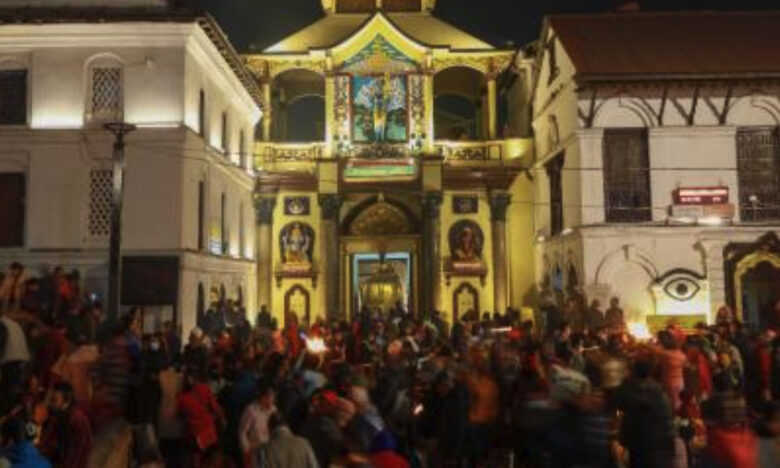KATHMANDU, NEPAL, November 18, 2025 (Lokmat Times): Sitting under tarpaulin shelters and tending to oil lamps through the night in the premises of the Pashupatinath Temple, thousands of Hindu devotees gathered on the eve of Bala Chaturdashi, praying for the salvation of departed souls. Devotees camp overnight, remaining awake to care for the lamps as part of the ritual dedicated to the peace of deceased family members. Bala Chaturdashi begins on Marga Krishna Trayodashi, the 13th day of the waning moon in the Nepali month of Mangsir. Observing strict fasting, devotees eat only one meal that day and abstain from garlic, onions, fish, eggs and other items considered impure. In the evening, they visit the Pashupatinath Temple or other shrines dedicated to Lord Shiva, chanting hymns and lighting the “Akhanda Jyoti” in memory of departed relatives. On Marga Krishna Chaturdashi, the next morning, devotees take a holy bath and begin their ritual walk around the temple complex, scattering seven kinds of grains along the path.
On the eve of Bala Chaturdashi, devotees also float lit lamps on the Bagmati River, a symbolic act believed to bring light to the souls of the departed in the afterlife. Many spend the night awake on the riverbank, facing the Pashupatinath Temple. According to Hindu belief, spreading these sacred grains(rice, barley, sesame, wheat, chickpeas, maize, and foxtail millet) in the Pashupati area ensures peace for ancestors in the afterlife and brings well-being to the family. The origins of the festival are described in the Himavat Khanda of the Skanda Purana, where Lord Shiva narrates how offering a single grain on this day is equivalent to donating gold. It ensures peace for ancestors and prosperity for the family.
https://www.lokmattimes.com/international/thousands-of-hindu-devotees-gather-at-nepals-pashupatinath-temple-light-lamps-for-bala-chaturdashi/amp/
A daily summary of world news for Hindus and non-Hindus alike

